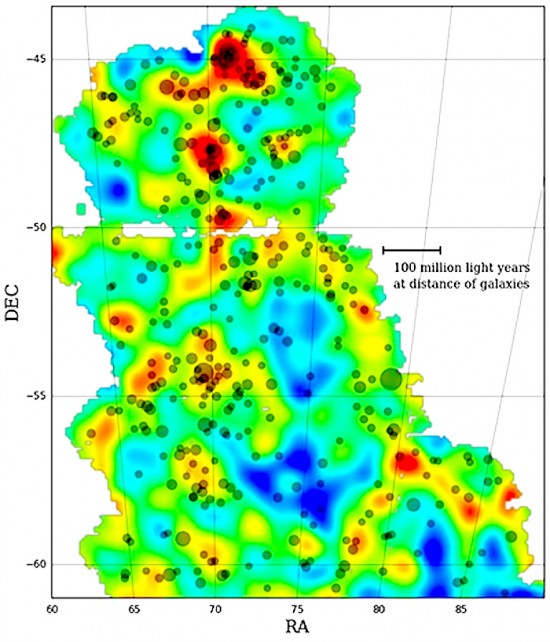Nov 17, 2015
Electric Universe theory fits observations better than dark matter theory.
In previous Picture of the Day articles about the existence of “dark matter”, it was noted that it is primarily an ad-hoc theory, created so that the current gravitational models of the Universe can be preserved.
There has always been a problem in the underlying concept of “big bang cosmology”. Conventional theories insist that the big bang brought all matter and energy—including gravity—into existence. Every modern cosmologist starts with that theory as a core principal. According to conventional physics, without adding dark matter to the equation there is not enough gravity in the Universe to account for galaxies bunching together. Also galaxy clusters should have slowed down considerably over the last few billion years and not maintained such extreme recessional velocities, some of which approach 90% of light-speed. In fact, much to the perplexity of standard gravity-only views of the Universe, more remote galaxies look like they are accelerating away from the Milky Way.
Astronomers first postulated a dark—or cold or exotic—form of matter when they noticed the stars at the edge of a spiral galaxy revolving at the same angular speed as stars closer to the center. However, Newtonian mechanics states that stars farther away from the center should be moving more slowly. Therefore, astronomers assumed dark matter, not observable by current instruments, was imparting extra speed to the stars.
It is also difficult (in conventional theories) to reconcile the amount of mass in the Universe with how fast the Universe is expanding. The only recourse has been to invent the existence of another undetectable force, “dark energy”. In other words, two of the most actively pursued problems in physics could be based in erroneous ideas about how the Universe is made, and how it should behave within the confines of those ideas. Even conventional theorists do not agree with one another about dark matter and dark energy.
“We measured the barely perceptible distortions in the shapes of about 2 million galaxies to construct these new maps. They are a testament not only to the sensitivity of the Dark Energy Camera, but also to the rigorous work by our lensing team to understand its sensitivity so well that we can get exacting results from it.” said Vinu Vikram of Argonne National Laboratory, leader of the Dark Energy Survey.
If the Universe is based on the prevailing theories of Einstein, and gravity is the bending of time and space around any object with mass, then dark matter and dark energy are merely illusions. The misunderstanding of Einstein’s space-time curvature necessitated the creation of a new effect because the application of the theory was incorrect. That idea was first suggested in 2006 by a team of Italian researchers who analyzed rotational curves from several galaxies and thought that dark matter and dark energy were not necessary with their new approach.
There is no need to resort to a super-application of Relativity Theory in order to understand why the required percentages of dark matter and dark energy are so familiar. It is often written in the popular press that dark matter makes up “25% of the Universe” or that dark energy makes up “75% of the rest of the Universe”. To anyone familiar with plasma physics, it is well known that plasma makes up 99.99% of the Universe. Perhaps the theoreticians should look to a science that is basic and foundational rather than inventing brand new sciences and arguing about which is more feasible.
From the perspective of Electric Universe theory, electric currents drive the galaxies and their associated stars. Laboratory experiments confirm that Birkeland current filaments can create structures that resemble spiral galaxies. Birkeland currents have a longer-range attractive force than gravity, and, as shown by Professor Donald Scott, diminish with the square root of the distance from the current axis. As an aside, that force could also account for the anomalous movement of stars as they revolve around the galactic core.
It is electricity moving through plasma that tends to initiate the effects observed with space-based telescopes. It is electric charge flow in the cosmos and its associated magnetic fields that should be the focus of research and not a search for the undetectable.
Stephen Smith













